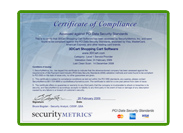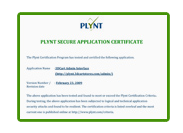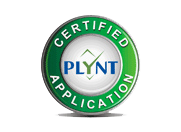Build and Maintain a Secure Network
First Requirement
Install and maintain a firewall configuration to protect cardholder data. Firewalls are computer devices that control computer traffic allowed into and out of a company’s network, as well as traffic into more sensitive areas within a company’s internal network. A firewall examines all network traffic and blocks those transmissions that do not meet the specified security criteria. All systems must be protected from unauthorized access from the Internet, whether entering the system as eCommerce, employees’ Internet-based access through desktop browsers, or their email access. Often, seemingly insignificant paths to and from the Internet can provide unprotected pathways into key systems. Firewalls are a key protection mechanism for any computer network.
Second Requirement
Do not use vendor-supplied defaults for system passwords and other security parameters. Hackers (external and internal to a company) often use vendor default passwords and other vendor default settings to compromise systems. These Passwords and settings are well known in hacker communities and easily determined via public information.


